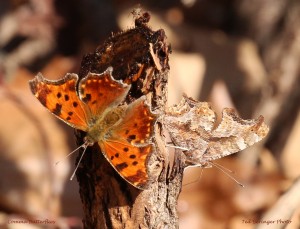Watching birds at the nest is fun–and fuels bird conservation
Springtime is nesting time, and that means another season of beautiful birdsong, colorful eggs, and downy nestlings. Spring also brings another season of NestWatch, a free citizen-science project from the Cornell Lab of Ornithology. Volunteers have been helping the Lab monitor nesting birds for 50 years, keeping tabs on open-cup nests and actively putting out the welcome mat for species that prefer a cozy cavity.
“Even those who already have birds nesting nearby can support more birds by putting up a nest box, or by landscaping for nesting birds,” says NestWatch project leader Robyn Bailey. “Supplying nesting materials, like wool, cotton, or pet fur is another great way to encourage more birds to take up residence.”
NestWatch provides an intimate glimpse into the lives of nesting birds but it is much more. NestWatch data have been used in more than 130 scientific studies, yielding valuable information for scientists and land managers, such as:
♦ When, where, and how many eggs are laid by certain species across a wide range
♦ How to minimize the effects of forestry and agricultural practices on nesting birds
♦ Revealing that some species, such as Tree Swallows and Eastern Bluebirds, are nesting
earlier as spring temperatures have risen.
These discoveries and others are made possible by people who simply enjoy watching birds in their backyard or local park.
“I find observing the behavior of the natural world endlessly fascinating,” says participant Kate Lowry. “NestWatch offers me the chance to channel my efforts into this more organized method that can provide information to real scientists who, in turn, use the data in their studies.”
“Even after five decades there’s a lot learn,” says Bailey. “For example, data on the Eurasian Collared-Dove, a relative newcomer to North America, remains sketchy. We still don’t know how its presence affects our native Mourning Doves, or even how many times they can nest in one year.” Scientists need more data to understand how and why species respond differently to large, continent-level changes in the environment.
NestWatch can be a wonderful learning experience for the whole family. Find out more about the project, sign up, and learn how to locate and monitor nests at NestWatch.org.

